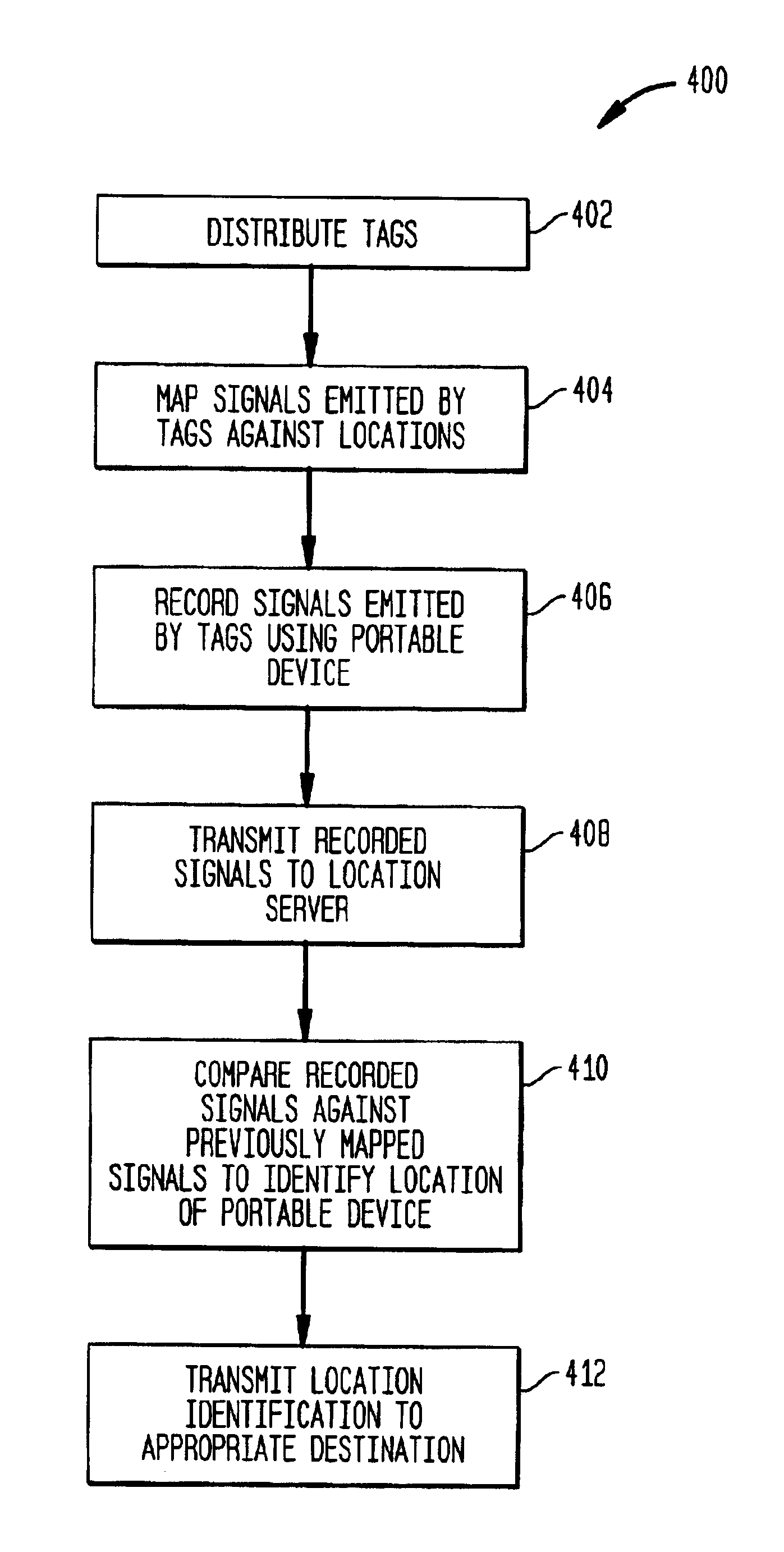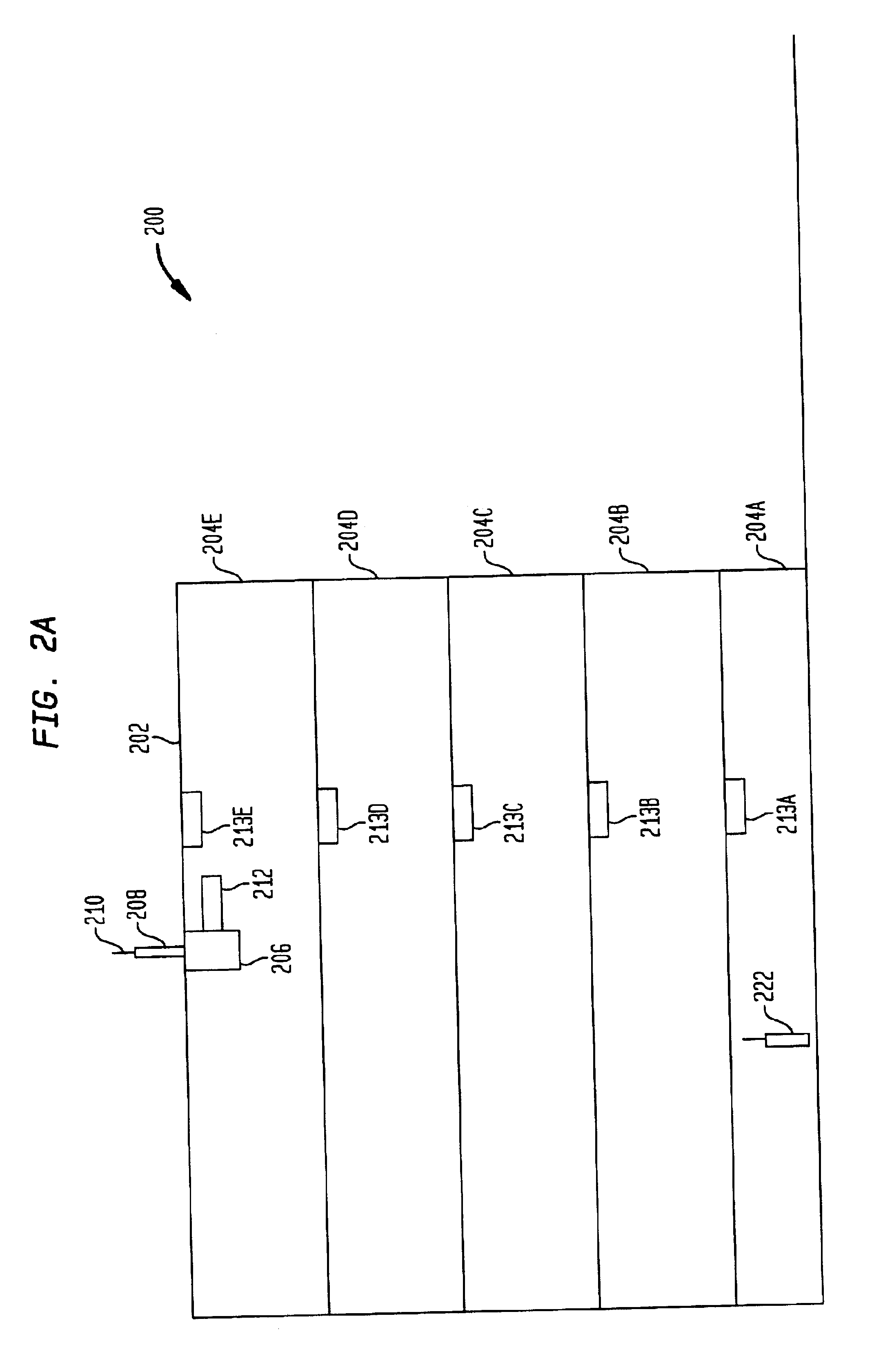Methods and apparatus for location determination based on dispersed radio frequency tags
a technology of radio frequency tags and methods, applied in direction finders using radio waves, instruments, reradiation, etc., can solve the problems of gps receivers not being reliable solutions for determining the location of users inside buildings, gps receivers having drawbacks that detract from their desirability, and it may take several minutes for gps receivers to achieve location fix
- Summary
- Abstract
- Description
- Claims
- Application Information
AI Technical Summary
Benefits of technology
Problems solved by technology
Method used
Image
Examples
Embodiment Construction
[0014]FIG. 1 illustrates a location identification system 100 according to an aspect of the present invention. The system 100 includes a plurality of identifier tags 102A . . . 102N dispersed throughout a preferably three dimensional, such as a building, within which a user's location is to be determined. In the example illustrated here, the representation of the region is a vertical layout of a building 104, showing the floors 105A-105E.
[0015]The user's location is determined by a portable device such as a wireless telephone 106 that receives signals from a nearby one or ones of the tags 102A . . . 102N, such as the tags 102J and 102K. A central location broadcaster 108 may suitably be located in the building 104, broadcasting geographic coordinates, such as address, latitude and longitude or the like in such a way that this information can be received by the telephone 106 or by any other portable devices that may need to use such information. When the user makes a call to an emerg...
PUM
 Login to View More
Login to View More Abstract
Description
Claims
Application Information
 Login to View More
Login to View More - R&D
- Intellectual Property
- Life Sciences
- Materials
- Tech Scout
- Unparalleled Data Quality
- Higher Quality Content
- 60% Fewer Hallucinations
Browse by: Latest US Patents, China's latest patents, Technical Efficacy Thesaurus, Application Domain, Technology Topic, Popular Technical Reports.
© 2025 PatSnap. All rights reserved.Legal|Privacy policy|Modern Slavery Act Transparency Statement|Sitemap|About US| Contact US: help@patsnap.com



